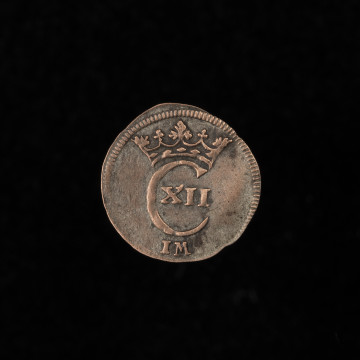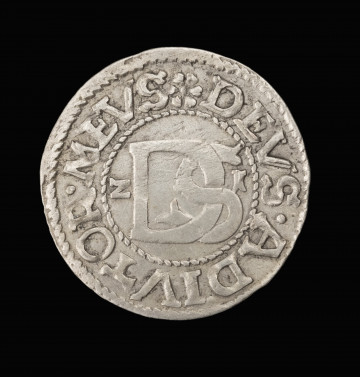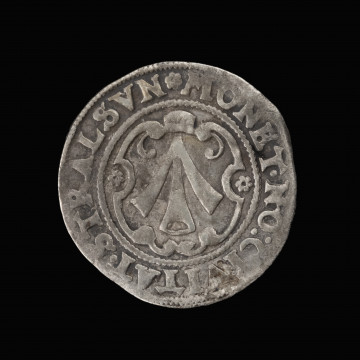
Witen
1707
National Museum in Szczecin
Part of the collection: Pomeranian coins
Prince Philip Julius of Wolgast minted his coins at the illegal mint in Franzburg. From 1609 onwards, he minted there on a massive scale mainly sub-value two-shilling coins with only a theoretical value of 1/16th of a thaler, which contributed to monetary destabilisation. By the early 1720s, the crisis had spread throughout the Reich, climaxing in hyperinflation known as Kipper und Wipper, so the recovery of coinage was an urgent political imperative. The most conspicuous result of the duke's struggle against inflation was the abandonment of the minting and devaluation of the low-value two-shilling coins. They were replaced in 1622 by a new denomination of 1/16 thaler, minted from good South American silver, also referred to as düttchen. In the following years, 1623-1625, countersigned (good) two-shilling coins were pulled from the market and punched into düttchens to stabilise the money rate. In terms of images, these coins, which are very rare today, follow the 1622 design pattern of this denomination. The composition of the obverse remained unchanged - a griffin in a shield placed on a long cross and a duke's title. On the reverse, the denomination was placed in the central field and the peculiar sentence: Reichs Schrot und Korn in the rim. A figurative inscription manifested the return to a full-value coin, like to a good grain. The appeal to the symbolism of the grain had a psychological significance, pointing to the strength and tradition of the Reich. The acorn sign in the obverse rim inscription referred to the Münzmeister Hans Puls, who held this position between 1622 and 1625. Genowefa Horoszko
Other names
1/16 Taler, Düttchen
Author / creator
Object type
thaler
Technique
coining
Material
silver
Origin / acquisition method
acquisition
Creation time / dating
Creation / finding place
Owner
Muzeum Narodowe w Szczecinie
Identification number
Location / status

1707
National Museum in Szczecin

1621
National Museum in Szczecin

1647
National Museum in Szczecin
DISCOVER this TOPIC
National Museum in Lublin
DISCOVER this PATH
Educational path